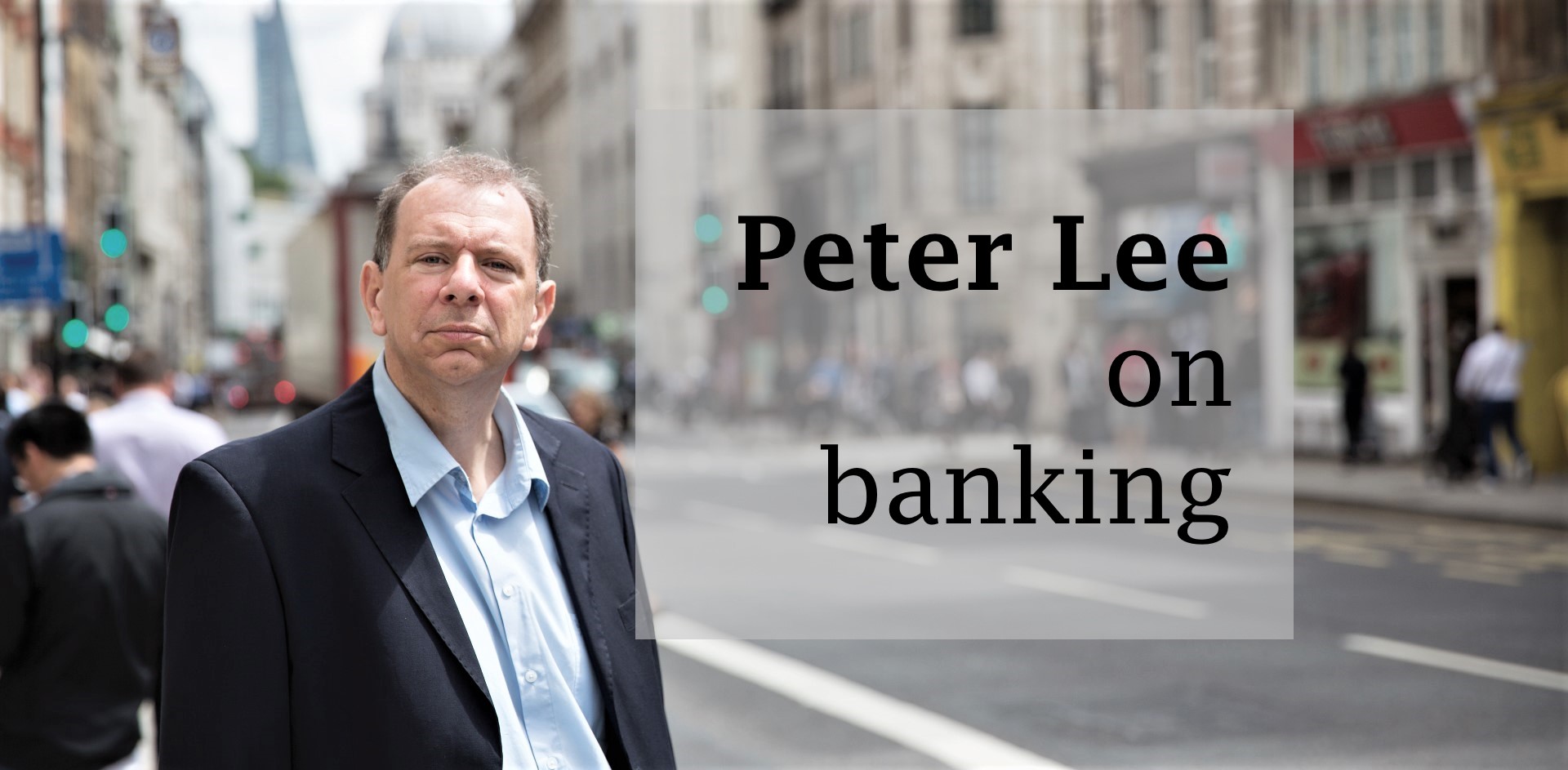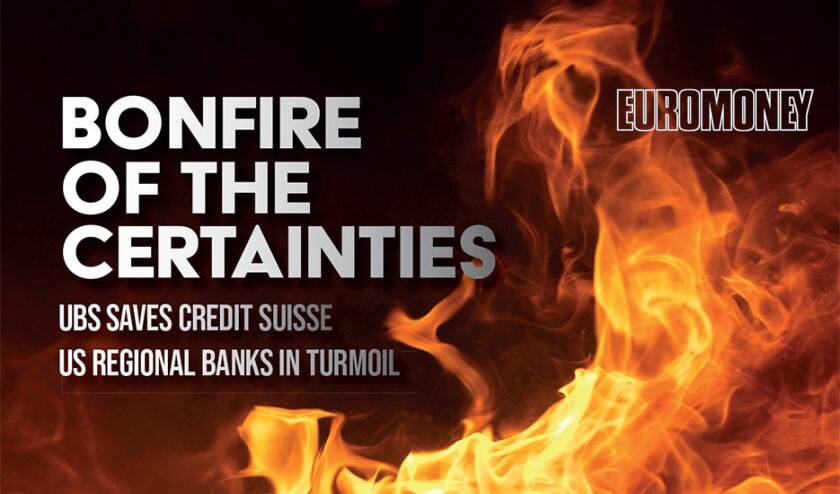
The state-sponsored rescue takeover of Credit Suisse had just one aim: to prevent an imminent collapse of the Swiss banking system and economy that would have then spread contagion through international markets and may have sparked a repeat of the great financial crisis.
That kind of dire emergency can justify extraordinary actions whose full consequences will only become clear long after the immediate panic subsides, if it does.
The Swiss president, finance minister, central bank governor and head of the financial regulator all lined up on Sunday March 19 to describe UBS taking over its former rival as a private-sector solution. Although the chairmen of the two banks were also allowed a few brief words, this was, of course, nothing of the sort.
What do you call it when a government uses emergency powers to force two banks into a merger that neither had previously sought and then suspends the ability of shareholders – notionally the banks’ owners – to have any say in the matter?
It looks like a new form of temporary nationalization, at least of shareholder voting power if not of full financial exposure.
This all starts to look like a good deal for UBS. It acquires for a consideration of just SFr3 billion a bank that had CET1 capital of SFr35 billion
The Swiss state has taken on a fair chunk of that as well though. It used emergency powers to rush through a new public liquidity backstop, which provides guarantees for the Swiss National Bank to make another SFr100 billion of liquidity support available.
Let’s hope UBS doesn’t need that.
The state has also taken a mezzanine tranche exposure to the market risks embedded in some very long-dated, illiquid and hard-to-value market positions of Credit Suisse that UBS will now put into run-off.
UBS takes the first-loss equity exposure to these non-core assets of up to SFr5 billion; thereafter taxpayers are on the hook for the next SFr9 billion. If losses continue up to the senior tranche, they are then shared 50:50 between UBS shareholders and Swiss taxpayers.

What’s not to like?
This all starts to look like a good deal for UBS. Loss sharing with the state allows it to minimize risk-weighted asset inflation from taking on those level-3 assets. It acquires for a consideration of just SFr3 billion a bank that had common equity tier-1 capital of SFr35 billion.
And, as part of the capital boost from full recognition of SFr56 billion of accounting bad will, it doesn’t even have to service those pesky high-coupon Credit Suisse additional tier-1 (AT1) securities that have just been written off.
This is the step that will have the most immediate wider impact across capital markets.
When UBS offered a first run through the deal’s financials late on the Sunday night, analysts wanted to know if that upending of the traditional capital structure – forcing losses on junior bondholders while still paying shareholders for the acquisition – might bring litigation risk to UBS.

Ralph Hamers, chief executive of UBS, tried to stamp on the very idea. “Finma took that decision,” he said. “It is their decision. It does not create a liability for us.”
But on the Monday morning, as AT1 bondholders were consulting council about a legal challenge and markets sold off on doubts about the rescue, the ECB and the UK’s FCA declared their disagreement with the decision to prevent a meltdown across all bank junior debt.
Finma, the Swiss market regulator, says that the trigger for zero-ing the instruments is the extraordinary government support required to get the rescue takeover agreed. The logic is that without the merger Credit Suisse would have soon become non-viable as customers fled and other banks stopped doing business with it, and zeroing AT1s was essential to the merger deal.
This is an element of resolution creeping into a private takeover that seemed to have been designed to avoid either resolution or the other equally bad choice of full-blown nationalization. So for all Hamers’s bluster, UBS shareholders must weigh whether they could one day be back on the hook for those AT1s after all.
And there will likely be other legal challenges from UBS shareholders over forcing through a merger without a vote among the bank’s owners. After all, there were good reasons why UBS directors avoided such an obvious transaction for several years of mounting problems at Credit Suisse until the state intervened.
Credit Suisse had become toxic: a bank failing, somewhat unusually, not because of bad assets but because its customers simply no longer had faith in it.

The most telling question of the press conference was addressed archly to the chairman of Credit Suisse, asking him to explain who he thought was responsible for this disaster. Axel Lehmann wearily complained this was not the time for pointing fingers and ran through the litany of failures from Greensill to Archegos and the deposit flight in the Autumn of 2022. The bank could not survive a second such episode. “Too much becomes…too much,” Lehmann said in what will be the bank’s epitaph.
Credit Suisse is the latest example of the age-old problem with fractional reserve banking. If all customers want their money out at the same time, the horrible truth becomes clear that the money isn’t really there.
The hope now is that because UBS is a slightly bigger but much better managed and regarded bank, depositors and other creditors, including senior bondholders, can relax.
But could Credit Suisse poison UBS, and is this a crisis ended or merely prolonged?
Cold light of day
The emergency powers that the Swiss authorities have wielded also prevent monopoly considerations ever coming into play over putting together two banks whose combined balance sheets are now twice the size of the country’s economy.
So, if anything goes badly wrong with the new UBS – which itself had to be nationalized during the great financial crisis – this will all have been in vain.
One of the obvious lessons all bank depositors should have learned since the collapse of Silicon Valley Bank and the rescue of Credit Suisse is to spread their money – where possible to benefit from deposit insurance and, even when they have much bigger amounts to park, just to diversify risk.
In its Sunday night presentation of the deal, UBS expressed delight that its assets under management across both wealth management and institutional asset management will now grow from standalone UBS’s $3.9 trillion to a pro forma $5 trillion.
That’s over-optimistic.
UBS has taken on substantial deal execution risk that will take up management attention
Credit Suisse had been losing many billions of dollars’ worth of customer assets each day. Customers that also already do business with UBS have no strong incentive to put those back even though UBS is higher rated and profitable. Plenty of other loyal customers, perhaps even Swiss finance minister Karin Keller-Sutter herself (who admitted to having accounts at both Credit Suisse and UBS), will now be looking to put some business elsewhere to avoid having concentration risk with just one bank.
UBS says it hopes to cut annual expenses at Credit Suisse by $8 billion. That’s very roughly half the cost-base after the restructuring Credit Suisse had already embarked on. But it is going to lose a lot of revenues as well, including for now hard-to-calculate dis-synergies.
UBS has also chosen to take on all the litigation risk of Credit Suisse, a bank trapped on a hamster wheel of constantly paying for its previous misdeeds, claiming it has been cleaned up and then discovering whole parcels of new ones.
This is the part of the deal that UBS’s own shareholders, now facing a temporary suspension of share buybacks, would have looked closest at had they been allowed any say in the deal. If acquired litigation expenses should turn out much bigger than UBS has reserved for, some of those shareholders will sue.
Inconvenient truths
It has just become clear how flighty are the wealth management assets on which banks like UBS make their money.
For UBS and for all banks, the cost of deposit liabilities is going up. The cost of AT1s is likely to skyrocket. These have a new position in the capital stack, junior even to common equity. The secondary market will be offer-only until investors recalculate the required compensation and the primary market will be closed for the foreseeable future.
Risk aversion and tightening financial conditions make it likely that non-performing loans will rise from here. UBS may be given a long time to meet them, but its global systemically important bank capital requirements are going up; banks’ cost of equity is going up; net interest margins are coming down; and returns will likely fall.
UBS has taken on substantial deal execution risk that will take up management attention. It is on credit watch negative.
While UBS will run down the markets businesses that the previous Credit Suisse management was going to keep, it sounds like it will keep the investment bank Credit Suisse had planned to spin off.
Good luck negotiating with Michael Klein on that one.
Chief executive Ralph Hamers sees a chance to build wealth management share in the US on the back of the old Credit Suisse technology investment banking franchise, which he hopes can bring relationships with tech entrepreneur wealth creators.
After the collapse of Silicon Valley Bank, presumably he is staring at that opportunity in the rear-view mirror.
UBS is making itself more complex at a time when creditors and investors put a premium on simplicity and focus.





